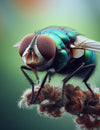
Biological control is a program of IPM (Integrated Pest Management) that control insects by using living organism. The goal of using the biological control method is to reduce the damage that pests/insects can cause if not controlled.
Biological control is beneficial against all classes of pests including weeds, plant pathogens, and vertebrates. What organism and pests are used against other pests differs.
Recognizing the role of natural enemies?
Pests are some tiny too big like rodent size species that create trouble or annoyance in our life. Pests are there to destroy some crops or plants that we want to save.
To deal with these troublemaker species natural enemies can play a big role. Natural enemies (beneficial pests) have the potential to deal with the pest that harms the crops. This non-toxic way of controlling pests becomes the key point of the pest control measure.
Three classes of beneficial pests are predators, parasitoids, and pathogens.
Approaches used in biological pest control

Three methods can be used single or in combination to control pests biologically. These methods are known as importation, augmentation, and conservation.
Importation
Importation of beneficial pests is a program of IPM also known as classical biological control. This mechanism is used when a particular pest is targeted. In this program of bio-control beneficial pests are imported either accidentally or sometimes intentionally.
Augmentation
Augmentation can be used by mass production or periodic colonization of beneficial pests.
Conservation
Conservation of pests is a critical point in the biological control of the pest. In this method, a person finds the sources that restrict beneficial pests. And either try to remove sources that limit beneficial pests or increase the sources that conserve good pests.
Necessary steps in biological control
Identification of pest (natural enemy)

Natural enemies are generally divided into three categories.
Predators
Predators are to catch and eat their target pest (pray). Some predators are ladybugs, ground beetles, hour flies, and lacewings.
Parasitoids
The parasite also known as parasitoids are known to devour their prey directly. They usually lay eggs and when their eggs hatch they eat the host prays as their food.
Parasitoids also need additional food sources along with pray pests such as nectar or pollen. Some examples of parasitoids are small wasp and tachinid flies.
Pathogens
Pathogens are organisms that make other harmful pests sick. Fungi, protozoa, nematode, virus, and insect-parasite bacteria are used for this purpose. Bacterium Bacillus thuringiensis (BT) is a very well-known agent that is used as a pathogen.
Pathogens use in biological control also known as microbial control.
Know who eats whom
Take action to replace pesticides with natural enemy
Why use biological control method?
Biological control is used to control pests by using living organisms. But the question may arise here why do we use biological control when we can solve the identical problem with chemical use.
But friends do you know what impact chemicals leave on the ecosystem and environment? How harmful it can be to the person spraying a pesticide if face chemical exposure? Do you know chemical pesticides can leave a harmful impact on the environment for years?
To protect our environment from the chemical side effects switching to bio-control is necessary. The biological control method used already presents living organisms (beneficial pests) against harmful pests.
And when we have the solution provided by nature itself then let's say no to synthetic chemicals.



